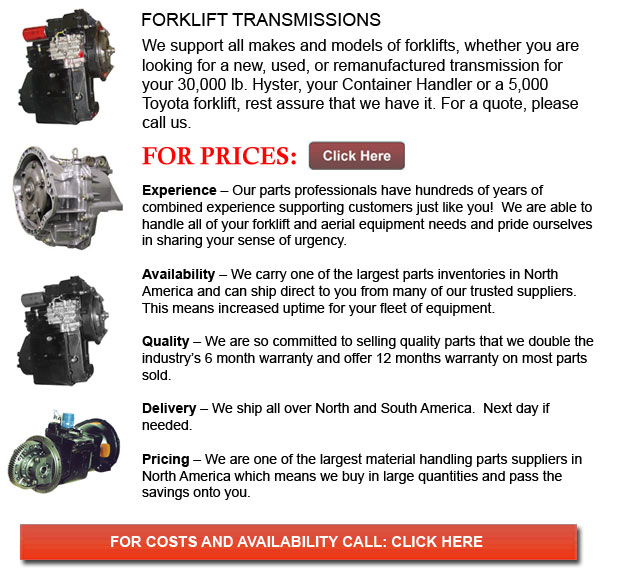
Forklift Transmission - A transmission or gearbox utilizes gear ratios in order to provide torque and speed conversions from one rotating power source to another. "Transmission" refers to the complete drive train that consists of, differential, final drive shafts, prop shaft, gearbox and clutch. Transmissions are most normally used in vehicles. The transmission adapts the productivity of the internal combustion engine to be able to drive the wheels. These engines need to function at a high rate of rotational speed, something that is not appropriate for starting, slower travel or stopping. The transmission raises torque in the process of decreasing the higher engine speed to the slower wheel speed. Transmissions are even used on fixed machines, pedal bikes and wherever rotational torque and rotational speed require alteration.
There are single ratio transmissions which work by changing the torque and speed of motor output. There are a lot of multiple gear transmissions with the ability to shift between ratios as their speed changes. This gear switching could be accomplished by hand or automatically. Reverse and forward, or directional control, could be provided as well.
The transmission in motor vehicles will typically connect to the engines crankshaft. The output travels through the driveshaft to one or more differentials in effect driving the wheels. A differential's most important function is to be able to adjust the rotational direction, although, it could even supply gear reduction as well.
Torque converters, power transformation and hybrid configurations are various alternative instruments used for speed and torque adjustment. Typical gear/belt transmissions are not the only mechanism accessible.
The simplest of transmissions are simply known as gearboxes and they provide gear reductions in conjunction with right angle change in the direction of the shaft. Sometimes these simple gearboxes are utilized on PTO machines or powered agricultural equipment. The axial PTO shaft is at odds with the usual need for the driven shaft. This shaft is either vertical, or horizontally extending from one side of the implement to another, which depends on the piece of machinery. Silage choppers and snow blowers are examples of much more complex equipment that have drives supplying output in various directions.
In a wind turbine, the kind of gearbox utilized is more complex and larger as opposed to the PTO gearbox utilized in agricultural machines. The wind turbine gearbos changes the high slow turbine rotation into the faster electrical generator rotations. Weighing up to several tons, and based upon the size of the turbine, these gearboxes normally contain 3 stages in order to achieve a whole gear ratio starting from 40:1 to over 100:1. So as to remain compact and to be able to supply the massive amount of torque of the turbine over more teeth of the low-speed shaft, the initial stage of the gearbox is typically a planetary gear. Endurance of these gearboxes has been a problem for some time.
![]() Click to Download the pdf
Click to Download the pdf
Forklift Parts
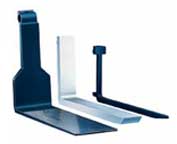
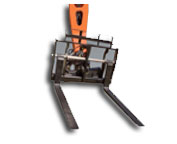
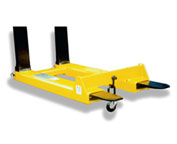
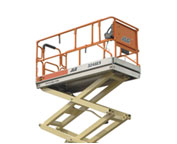
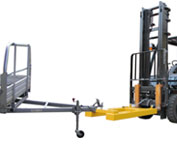
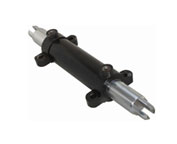
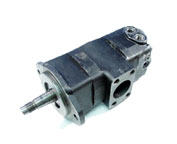
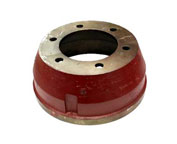
Lift Parts Express
TOLL FREE: 1-888-695-7994
Milwaukee, Wisconsin
forkliftpartsmilwaukee.com
Email Us
About Us


